NIL
Mike Conley Net Worth and NBA Contract
Mike Conley might be known for his cool-headed plays on the court, but his off-court game is just as sharp. Between a new Minnesota Timberwolves contract, some sleek brand deals, and luxury real estate buys, Conley has quietly built a well-rounded financial empire. How Much Timberwolves Pay Conley Conley signed a two-year, $20.75 million contract […]
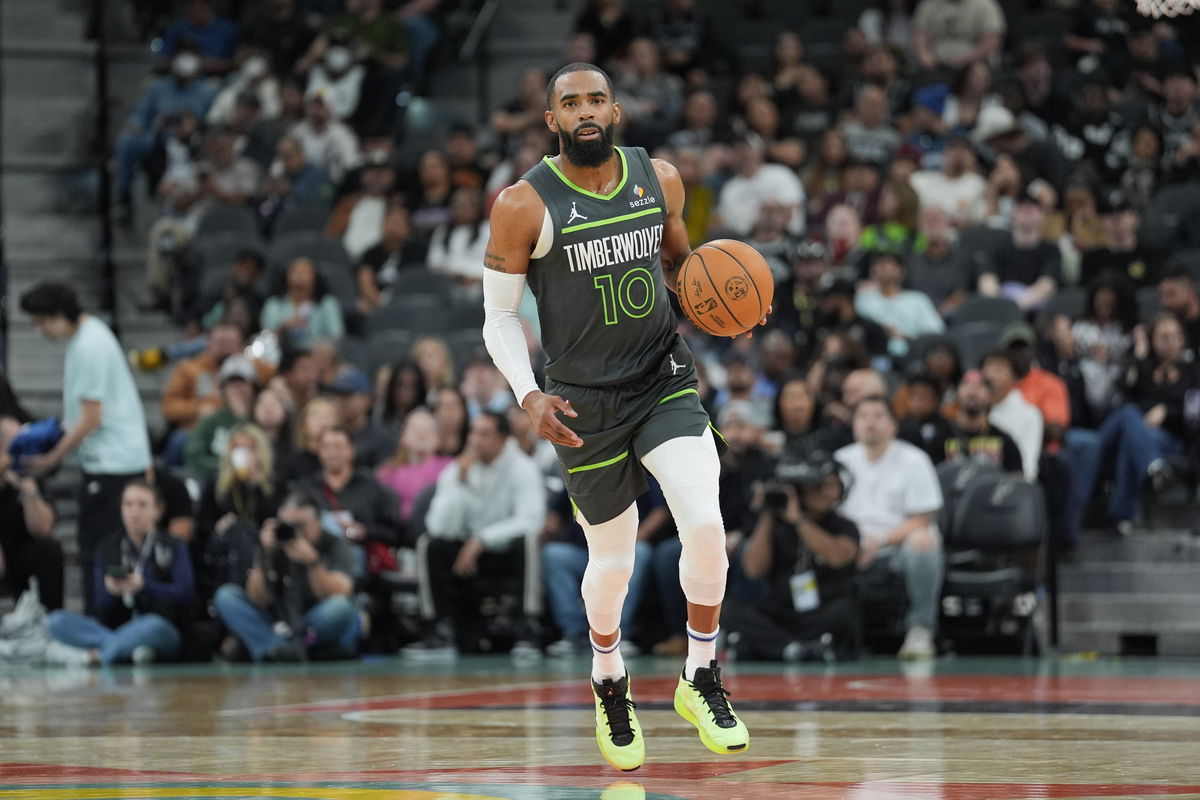


Mike Conley might be known for his cool-headed plays on the court, but his off-court game is just as sharp. Between a new Minnesota Timberwolves contract, some sleek brand deals, and luxury real estate buys, Conley has quietly built a well-rounded financial empire.
How Much Timberwolves Pay Conley
Conley signed a two-year, $20.75 million contract extension with the Timberwolves in February 2024. This contract is fully guaranteed and was signed using Bird Rights, allowing the Timberwolves to exceed the salary cap to retain him.
Under this contract he will earn something like this — he will make $9,975,962 in the 2024–25 season, this amount will reach $10,774,038 in 2025–26 season and after that he will become a free agent.
His extension is seen as team friendly especially compared to his previous $24.36 million salary, saving the team over $14 million and helping with luxury tax concerns. This contract has a six month trade restriction due to the structured salary increase, although a full no-trade clause hasn’t been publicly disclosed.
A Look at Conley’s Brand Endorsement Deals
Beyond the NBA he has made several brand deals such as Jordan Brand, Toyota etc. that makes a huge part of his wealth.
In 2016, he signed a deal with Jordan Brand after spending eight seasons with Adidas and briefly wearing Under Armour sneakers. He made debut as a Jordan Brand athlete during the Memphis Grizzlies’ season opener in October 2016, wearing the Air Jordan 31 “Battle Grey.”
He had also shown the “Fine Print” colorway of the same model during Media Day. As a member of the Jordan Brand family, Conley has access to exclusive releases and custom colorways, enhancing his presence both on and off the court.
He has also collaborated with Toyota, for instance, in 2015, Toyota presented a documentary titled “DRIVEN – Mike Conley: Memphis Made,” which aired on FOX Sports Southeast. This program shows his journey from his high school to his NBA career with the Memphis Grizzlies.
During this collaboration with Vivint Smart Home, he was seen with his teammate Bojan Bogdanović in a Vivint commercial. The ad features the duo playing video games at Bogdanović’s home when a Vivint doorbell camera notifies them of a package delivery.
In 2016, Mountain Dew expanded its NBA partnerships by collaborating with several players to promote the sport’s culture and lifestyle. He was among the featured athletes, this collaboration aimed to celebrate basketball, music, art and style.
In 2021, he participated in the brand’s 3-Point Contest during the NBA All-Star Weekend. He was named as an injury replacement for Devin Booker and made a significant impact by advancing to the final round, ultimately finishing as the runner-up to Stephen Curry.
Conley’s Complete Net Worth in 2025
Conley’s net worth is estimated to be at $70 million in 2025, this figure includes all of his income from the NBA and his brand endorsement. He has also invested in real estate over the years, especially during his time with the Memphis Grizzlies.
Back in 2007, he bought a 6,338-square-foot, five-bedroom house in Memphis for $900,000. He listed it for $1.15 million less than a year later but ended up selling it in 2017 for $735,000, taking a bit of a loss.
In 2016, he bought a beautiful 7,345-square-foot French-style estate in Collierville, Tennessee, for $1.84 million. The place had it all — vaulted ceilings, grand formal rooms, a custom kitchen, a fancy pool, and peaceful walking paths. He listed it in 2019 for $1.99 million, but after some price drops, sold it in December 2020 for $1.5 million.
He has four cars that contribute to their fare share in his wealth. His car collection includes a Maserati Quattroporte priced at $127,250, Land Rover Range Rover valued at $95,000, Tesla Model S $89,990 and lastly Ford Bronco $39,630.
NIL
NIL Struggles Far From Over After NCAA’s House Settlement
NIL Struggles Far From Over After NCAA’s House Settlement originally appeared on Athlon Sports. The historic decision to overturn the current NCAA regulations regarding student-athlete compensation in favor of a more profitable era has been made. However, another issue has arisen. Advertisement Less than a week since the House Settlement was finalized, eight female athletes […]
NIL Struggles Far From Over After NCAA’s House Settlement originally appeared on Athlon Sports.
The historic decision to overturn the current NCAA regulations regarding student-athlete compensation in favor of a more profitable era has been made. However, another issue has arisen.
Advertisement
Less than a week since the House Settlement was finalized, eight female athletes from three different schools have filed an appeal to the landmark ruling. They claim that the settlement violates federal anti-discrimination law against female athletes. The appeal addresses concerns about fair compensation for female athletes and asserts that the settlement itself violates Title IX, a federal law that strictly prohibits sex-based discrimination in education.
The eight former student-athletes who initiated this appeal are College of Charleston’s Lexi Drumm, Emma Appleman, Riley Hass, Savannah Baron, Elizabeth Arnold, Emmie Wannemacher, Kacie Breeding from Vanderbilt University, and Kate Johnson from Virginia Tech University. These athletes are proficient in soccer, track and field, and volleyball.
Each of these individuals had previously filed objections to the proposed NCAA settlement, granting them standing to appeal the decision. They, along with their legal representation, contend that former female student-athletes will be receiving an unjust amount of compensation based on the settlement’s terms. Attorney Ashlyn Hare has even asserted that female athletes would be deprived of $1.1 billion.
In response, the plaintiffs in the settlement issued a statement revealing the consequences of this appeal, as well as stating that Judge Wilken (the judge who made the historic decision) has already made the correct decision to deal with the Title IX issue “correctly, quickly, and multiple times”. With this appeal set to play out, former student-athletes may be waiting another few months to possibly more than a year before the first settlement checks begin to arrive, putting a halt to the player back-pay settlement once again.
Advertisement
The settlement has shown that priorities will be given to football and basketball players when it comes to NIL payments, showing that the stars of these sports at the biggest schools will receive a larger chunk of the allotted $20.5 million per year that colleges will be allowed to share with their student-athletes.
Related: Arch Manning adds to NIL portfolio with major deal
It is also rumored that athletes in sports at those same schools that don’t make as much revenue could possibly see their partial scholarships removed or even roster spots cut due to the decision of the settlement as it is now. The appeal is set to challenge these issues as well.
With this appeal filed and the back-pay to former student-athletes temporarily suspended, the decisions made in the future will establish regulations and ensure a fair and equitable future for both male and female student-athletes.
This story was originally reported by Athlon Sports on Jun 17, 2025, where it first appeared.
NIL
How college basketball regained its place as top NBA development option
Myron MedcalfJun 18, 2025, 07:30 AM ET Close Myron Medcalf covers college basketball for ESPN.com. He joined ESPN in 2011. There is an alternate reality — one before the dawn of the name, image and likeness era in college basketball — in which projected NBA draft lottery pick Egor Demin stayed in Spain the year […]
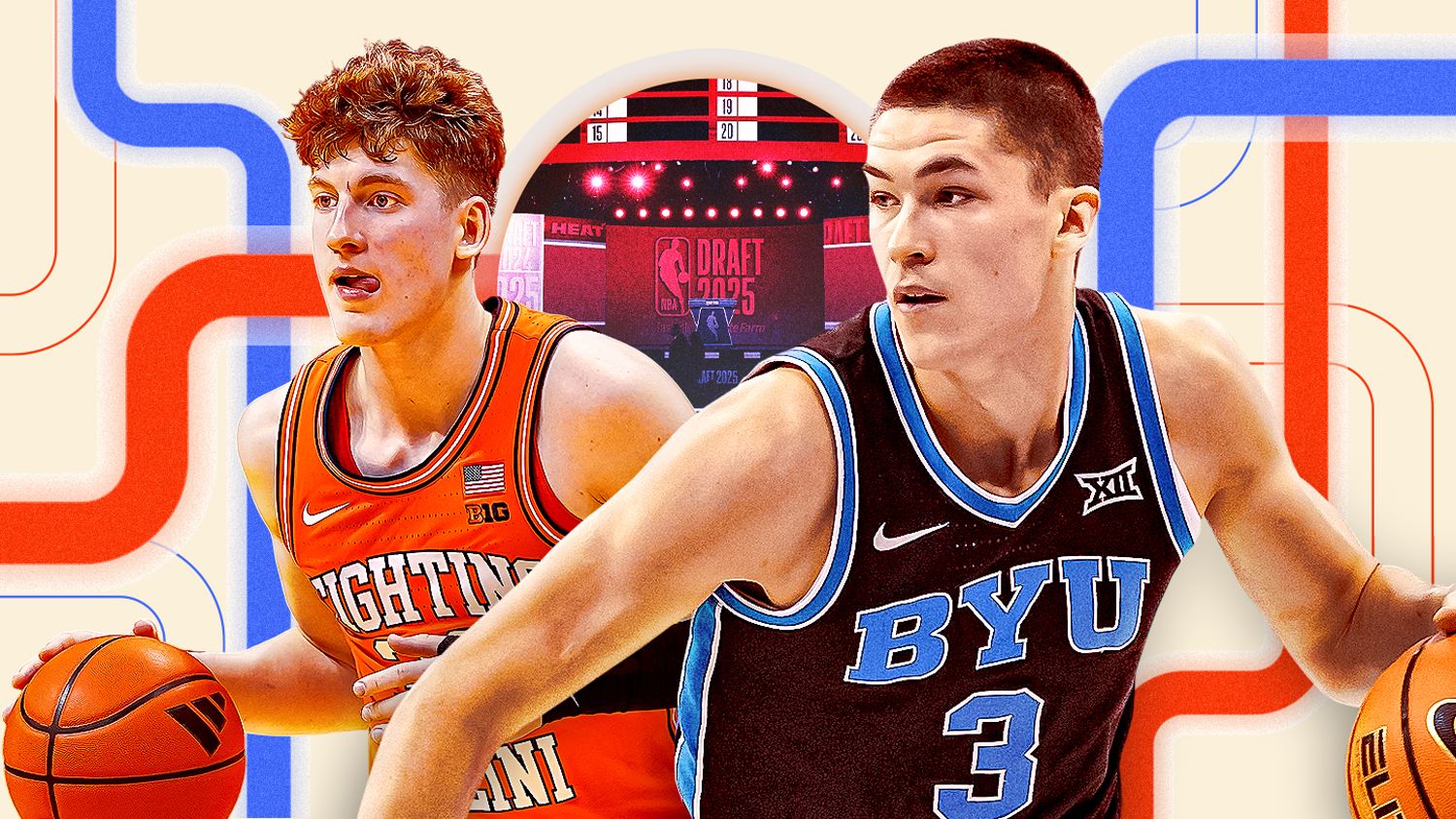
There is an alternate reality — one before the dawn of the name, image and likeness era in college basketball — in which projected NBA draft lottery pick Egor Demin stayed in Spain the year before he declared for the draft to continue playing for the EuroLeague’s Real Madrid. In this reality, though, he relocated to the United States — to Provo, Utah, more than 5,000 miles away from his hometown of Moscow, Russia.
Friends and family needed convincing that the move to play for former NBA coach Kevin Young at BYU was the right decision to help Demin achieve his dreams of playing professionally in the United States. That task became even more difficult when he told them he had never seen the campus, and Demin told ESPN: “That was pretty wild for people to hear that I’ve committed to BYU without visiting it. My first time when I was there, it was pretty much when I moved over there.”
But Young, a former assistant with the Philadelphia 76ers and the Phoenix Suns, had made Demin a compelling promise: If the 6-foot-9 guard came to play for the Cougars, he would grow in a system created to mimic the NBA — one that would prepare him for the next level better than any other environment. (The $1 million-plus NIL package was compelling, too.)
By the end of a season that ended with BYU’s first Sweet 16 run in more than a decade, Young had delivered on that promise.
“It’s everything,” Young told ESPN about how BYU emulates the professional ranks. “It’s style of play. It’s how we work out. It’s who works them out. It’s what they eat, who tells them what to eat. It’s all those things that are giving him a head start, not just, ‘Hey, our head coach was in the NBA.’ It’s an all-encompassing type of program.”
The way BYU and other programs have modeled their operations after NBA teams, coupled with the lucrative NIL opportunities in college, has helped pave the way for a significant shift in the NBA development pipeline.
Between 2015 and 2022, an average of 12 of the top 14 lottery picks were college players, per ESPN Research. Yet the last two drafts featured a total of only 17 college players in the lottery. In 2023, when Victor Wembanyama went No. 1 to the San Antonio Spurs, five of the top seven picks came from international leagues, Overtime Elite or the now-defunct G League Ignite. Last year, four of the top six picks came through one of those developmental paths.
But this year, ESPN projects 12 college basketball players will be picked in the lottery, which would tie the second most since 2015, per ESPN Research. After a period in which college basketball had become almost an afterthought in NBA development, it seems to have reemerged at the top.
As the No. 13 pick in ESPN’s latest mock draft, Demin is a prime example of why. The slick guard’s intangibles — including a 6-foot-10¼ wingspan — probably would have positioned him to earn a spot in the first round of the draft regardless of the path he’d chosen. But during BYU’s Sweet 16 run, NBA executives and scouts had a chance to watch Demin lead an elite program on one of the sport’s biggest stages.
“[College basketball is] a better adjustment to American basketball since the final goal is to be an NBA player for me,” Demin said. “So [I knew] this transition would probably help me a lot. Obviously, we’ll never know how it would be if I’d stayed in Europe or let’s say, went back to Russia or whatever it is. But at the moment, I think it was a better, a more clear path.
“I would better adjust to American basketball, the physicality, how quick the game is, how fast people are and all that.”
College basketball is once again king and, as such, has become the most desirable option for players with NBA aspirations.
“I would say being a young kid, you still want to have fun in college a little bit,” said Dylan Mingo, an uncommitted five-star prospect in the 2026 recruiting class with his eye on the 2027 NBA draft. “But really, [the appeal of college basketball is] just having the ability to be in the gym 24/7, going to class and just staying locked in.”
As college basketball regains its perch in the draft’s pecking order, it also offers a fascinating pool of talent mixed with one-and-done prospects, veterans and international players — a rare combination in this era. Duke’s Cooper Flagg (one-and-done), Colorado State’s Nique Clifford (fifth-year senior) and BYU’s Demin (international freshman) will all secure spots in the first round of the draft.
And in a midwestern town of 89,000, one college basketball program continues to pump out NBA prospects from each of those buckets.
Illinois head coach Brad Underwood has sent every type of prospect from Champaign to the NBA draft in recent years. Freshmen Kasparas Jakucionis from Lithuania and Will Riley are projected to go in the first round just a year after transfer Terrence Shannon Jr. was selected at No. 27 after an All-American season for the Fighting Illini. In 2021, former Illinois star Ayo Dosunmu was picked in the second round before signing a $21 million deal with the Chicago Bulls two years later.
That foursome all shared a similar trait.
“They’re professionals,” Underwood told ESPN. “They know how to work. They’re very much mature. They didn’t get wrapped up in anything else. I think the other thing that was extremely obvious was that they played to win. They’re extremely, extremely competitive. I mean, all of those guys have a different level of competitive juice. Not for one second did those guys play for anything other than the ability to win.”
For Underwood, NIL opportunities have helped his program identify and produce NBA talent. Although NIL is more complicated for international prospects, programs have found the loopholes to pay those athletes more than they would have made in Europe. It was a significant factor in the NBA’s decision to end its G League Ignite program after the 2023-24 season as more prospects chose to go to college. Overtime Elite has moved its focus to high school players for the same reasons.
“Now these kids can go to college and get paid — and most of these kids would prefer to go to college and play in March Madness and do these things, if all things are equal,” one NBA agent said.
But there is another component that matters. “You can build culture in college,” Underwood said. Experience in a program’s culture helps NBA teams feel more comfortable about selecting players from the college ranks and is one of the reasons for the level’s increasing edge over other developmental options.
“[Demin] was able to adapt to a different style of play while still being surrounded by people who respected his background and embraced his journey,” Nikola Filipovich, Demin’s agent, told ESPN. “I think that experience has hardened him and prepared him to thrive in any environment, and that’s exactly what he’ll face in the NBA.
“BYU didn’t just teach him how to play in the U.S., but I think it also taught him how to live within the U.S.”
College basketball’s return to the top of the developmental hierarchy has also coincided with a change in the NBA: Pro teams often want more polished talent as the financial stakes rise and the pressure to win intensifies.
Joe Mazulla and Steve Kerr are the only NBA coaches who have won an NBA title since 2016 and are still with the same team. In the current climate, college teams with a proven track record can offer a stable path for prospects and a reliable source for NBA teams leery of picking the wrong player. That has opened the door for experienced, mature upperclassmen who were largely ignored throughout the one-and-done era.
Long before the start of that trend, Tennessee’s Rick Barnes coached multiple NBA draft picks, including Kevin Durant during his time at Texas. For the can’t-miss players, the process is simple, he said.
“Kevin Durant could have gone anywhere and been the No. 1 pick,” Barnes said. “He should’ve been the No. 1 pick.”
For others, the draft is more complicated. When NBA teams talk to Barnes about his players — like 2024 lottery pick Dalton Knecht — they express a confidence in the futures of college-produced prospects because they know the players have been challenged to consider the details that can make a significant difference in the NBA.
“We’re still trying to teach them how to carry themselves,” Barnes said. “We talk about during the timeout, when you’re not in the game, where do you stand? There are [NBA] people up there in that scout box watching you right now. Are you engaged in the timeout? Are you wandering around? Are you looking up? Making eyes at your girlfriend? What are you doing?”
One Western Conference scout added that the allure of college players is “they’ve been coached right,” he said. “It’s about discipline. It’s about being able to play with others first.”
If the top programs in the country were trying to reach him in April, Darrion Williams’ phone was off. After a close loss to Florida in the Elite Eight, he withdrew from the NBA draft and entered the transfer portal — then went to Europe with some of his Texas Tech teammates to get their minds off the season’s ending.
“Some people might’ve called and I didn’t answer and they stopped calling,” he said.
Williams, a 6-foot-6 standout who earned all-Big 12 first-team honors last season, surprised many when he picked NC State over Kansas and other contenders. But Will Wade’s approach emulated a professional team’s makeup, Williams said. And he believed the Wolfpack’s new coach could prepare him for the NBA better than any other program.
On a hot day in Raleigh earlier this month, Williams and his teammates lifted weights ahead of a group workout, because NBA teams operate that way, Wade said.
Andrew Slater, the program’s general manager and chief strategist who has previously worked as a consultant and evaluation scout for the Oklahoma City Thunder, is charged with molding things into a professional operation. During the evaluation process, NBA teams told Williams he could be picked from late in the first round to early in the second round in this year’s draft. They also told him he would have to become a better defender and more consistent shooter to play at the next level. Williams said he picked NC State in part because of Slater’s experience in the NBA, adding he was impressed when Slater shared data on the statistical marks Williams would have to hit this season to earn that spot in the first round.
“I felt like if I used one more year and really honed in on everything and got with a coach like [Wade] and [strength coach Greg Goldin] in the weight room and burn on the court, I think I can solidify myself as a first-rounder and that’s what I’m trying to do this year,” Williams said.
A decade ago, Williams and other college veterans were afterthoughts at the height of the one-and-done days. The pursuit of youth does remain; the 12 freshmen ESPN projects in the top 14 would set a record for the most selected in the lottery era, per ESPN Research. But the league’s new CBA agreement, which levies severe financial penalties on teams that overspend and offers an exemption to facilitate the signing of second-round talent, has created a bigger market for players who need more time to develop and more paths to the NBA.
“Teams are going to start saying, ‘Well maybe we don’t need three stars,'” one Eastern Conference scout said about the financial pressures of the current NBA. “Or they’ll have three superstars and a bunch of minimum-salary players. That’s why in college, now, they will take a senior. Five years ago, you would bring a senior to the table and they would say, ‘Well, he’s already 22.'”
It’s worth noting that the bulk of this year’s prospects won’t come from college basketball’s blue bloods. The collective of Kansas, Kentucky, North Carolina and UCLA might not have a first-round pick for the first time since 2004. The top prospects today are picking programs according to desired roles, systems and resources. They want a chance to win, stand out and work with a team that can prepare them for the next level. Many of the projected top picks in this year’s draft played for colleges that had coaches or other staffers with NBA experience.
At Illinois, Jakucionis and Riley worked with assistant Zach Hamer, who was with the Los Angeles Lakers before he joined Underwood’s program. Fellow projected first-round pick Asa Newell was elevated by Darryl Hardin, Georgia’s director of player development who has trained NBA stars such as Indiana Pacers all-star Pascal Siakam. And potential top-seven pick Jeremiah Fears benefited from weight-room sessions with Ty Terrell, Oklahoma’s director of strength and conditioning, a role similar to the ones he had with the Washington Wizards and Atlanta Hawks.
Though college basketball could soon have a monopoly on American talent and an advantage over European teams with international players who have NBA hopes, the edge will belong to programs that operate like NBA teams. There is a belief that the next generation of prospects will not just hope for potential college suitors to have staff members with pro experience — it will be a requirement.
“I do think the player development can improve,” one NBA agent said. “I just think with the resources [college basketball programs] have and the money they have, I think the player development could improve a little bit. I think teams should be hiring guys with NBA experience.”
At BYU, Young had everything Demin wanted to compete for a spot in the first round of this year’s draft.
Immediately after being hired, Young shaped his team to mimic an NBA franchise. He brought on his brother as the general manager. He has multiple assistants who have coached in the NBA or G League. And he features an analytics staff.
Young didn’t have the brand name to compete against some of the blue bloods in his first year with the Cougars, but he did have the explosive offensive system that would give Demin the chance to be a leader and a star.
“I think it’s really hard to find a high-major program that’s going to put the ball in a 19-year-old international player’s hands and play them 30 minutes a night with the ball in his hands,” said Young, who will coach projected 2026 No. 1 pick A.J. Dybantsa next season. “And so I think he was very drawn to that and he seized the opportunity.”
After a recent NBA workout, Demin ended his day around midnight. Exhausted, he reflected on the journey to this moment, which included a midseason injury to go with the cultural and competitive adjustments to American basketball that culminated in leading his team to the Sweet 16 — a run that proved Young, BYU and college basketball were the right choices for him, Demin said.
“[Young] is obviously one of the biggest reasons why I chose BYU,” Demin said. “I was choosing BYU with the idea of who can prepare me for the NBA better than an NBA coach? And that makes a lot of sense to everybody. His ability to really find the right way to use players and to find me in the right actions, right positions, and right spots on the floor benefitted me extremely. And he taught me a lot of things that I hadn’t known before going there. And it’s not really about some exact skills or whatever, but just the overall understanding. He just brought me this NBA experience before I even got to the NBA.”
NIL
Did Ole Miss baseball find another Hunter Elliott in transfer Grant Richardson?
AI-assisted summaryFormer Grand Canyon pitcher Grant Richardson has committed to Ole Miss baseball.Richardson is recovering from Tommy John surgery and did not play in 2025.Richardson had a high strikeout rate at Grand Canyon.OXFORD — Coach Mike Bianco and Ole Miss baseball landed a nice prize in the transfer portal. Grand Canyon pitcher Grant Richardson committed […]


 AI-assisted summaryFormer Grand Canyon pitcher Grant Richardson has committed to Ole Miss baseball.Richardson is recovering from Tommy John surgery and did not play in 2025.Richardson had a high strikeout rate at Grand Canyon.OXFORD — Coach Mike Bianco and Ole Miss baseball landed a nice prize in the transfer portal.
AI-assisted summaryFormer Grand Canyon pitcher Grant Richardson has committed to Ole Miss baseball.Richardson is recovering from Tommy John surgery and did not play in 2025.Richardson had a high strikeout rate at Grand Canyon.OXFORD — Coach Mike Bianco and Ole Miss baseball landed a nice prize in the transfer portal.
Grand Canyon pitcher Grant Richardson committed to Ole Miss on June 12. It’s easy to understand part of the pitch for Oxford that appealed to him. Ole Miss offers a wide-open pitching rotation and a recent track record of pitchers successfully coming back from Tommy John surgery. It is the perfect landing spot.
Richardson missed all of 2025 while recovering from Tommy John surgery. It paused a strong career at GCU. Richardson began his sophomore season in 2024 as a bullpen pitcher before starting his final eight games. In 2024 he was 5-1 for the Antelopes with a 3.73 ERA. He allowed one run and was the winning pitcher in a 2024 NCAA Tournament game for GCU against No. 13 Arizona.
Strikeouts are Richardson’s biggest weapon. He had 70 strikeouts in 50⅔ innings in 2024. His strikeout rate per nine innings (12.43) was the highest in GCU history among pitcher with at least 50 innings.
Ole Miss pitcher Hunter Elliott just set the precedent for coming back from Tommy John surgery this season. He had a 2.94 ERA in 85⅔ innings for the Rebels. Richardson, a lefty like Elliott, will attempt to do the same under pitching coach Joel Mangrum. Both players even have a similar build. Both players are listed a 6-foot-3. Elliott is 215 pounds and Richardson is 220.
As long as Richardson elects to stay at Ole Miss instead of signing if he’s picked in the upcoming MLB draft, he will be a high-upside asset for the Rebels. There’s a path for him to shine as a weekend starter.
The Rebels have also added another left-handed pitcher from the transfer portal in Missouri pitcher Wil Libbert. Libbert missed all of 2024 with Tommy John surgery. He came back in 2025 and had a 6.04 ERA in a team-high 53⅔ innings for the Tigers.
Sam Hutchens covers Ole Miss for the Clarion Ledger. Email him at Shutchens@gannett.com or reach him on X at @Sam_Hutchens_
NIL
Vanderbilt quarterback says they will ‘run Tennessee after this year’
Tennessee football hasn’t lost to Vanderbilt since 2018 and is 4-0 under the watch of Josh Heupel. That recent history didn’t stop Commodores quarterback Diego Pavia from giving his thoughts on the future of the rivalry. He called out the Vols on an appearance on the podcast ‘Bussin’ with the Boys.’ “Vanderbilt is going to […]

Tennessee football hasn’t lost to Vanderbilt since 2018 and is 4-0 under the watch of Josh Heupel.
That recent history didn’t stop Commodores quarterback Diego Pavia from giving his thoughts on the future of the rivalry. He called out the Vols on an appearance on the podcast ‘Bussin’ with the Boys.’
“Vanderbilt is going to run Tennessee after this year,” Pavia said. “This is going to be the new staple of college football. It’s going to happen here at Vanderbilt.”
The following podcast contains NSFW language.
His reasoning is Vanderbilt’s location and NIL funds. He claims the reason people visit the state is to go to Nashville, the home of VU’s campus.
He also said that the Commodores will have ‘the most money in NIL’ in the future. The key is to get the ball rolling this upcoming season.
“Everyone wants to come to Tennessee because of Nashville. They want to come to Nashville, so Vanderbilt,” Pavia said. “And then when we have the most money in NIL, why not come here? We literally just have to win this year and throughout the rest of the year, it’ll take care of itself.”
Pavia enters his second season with the program as the starting quarterback. A year ago, he started against Tennessee at home, but had little success.
The Vols won the matchup 36-23 with their defense limiting what Pavia could do. He finished throwing 8-for-17 for 104 yards, one touchdown and one interception. He was sacked three times.
On the ground, Pavia notched 45 yards on 11 carries.
Overall, Tennessee owns the series 81-32-5. Since 1983, the Vols are up 36-6 in the series. This included a 22-game win-streak from 1983-2004.
This upcoming season, for Pavia and company to win, they’ll have to win inside Neyland Stadium on the road. The last time Vanderbilt pulled that off was 2017 in Butch Jones’ final season. Jones was already fired by that time with Brady Hoke serving as interim head coach.
Overall, the Vols are 40-11-1 at home in the series.
NIL
QB LaNorris Sellers rejected $8M transfer offer to stay loyal to Gamecocks
FILE – South Carolina quarterback LaNorris Sellers (16) reacts after scoring a touchdown in the second half of an NCAA college football game against Clemson, Saturday, Nov. 30, 2024, in Clemson, S.C. (AP Photo/Jacob Kupferman, FIle) (WCIV) — South Carolina’s breakout star quarterback, LaNorris Sellers, couldn’t think of anywhere else to play. After leading the […]
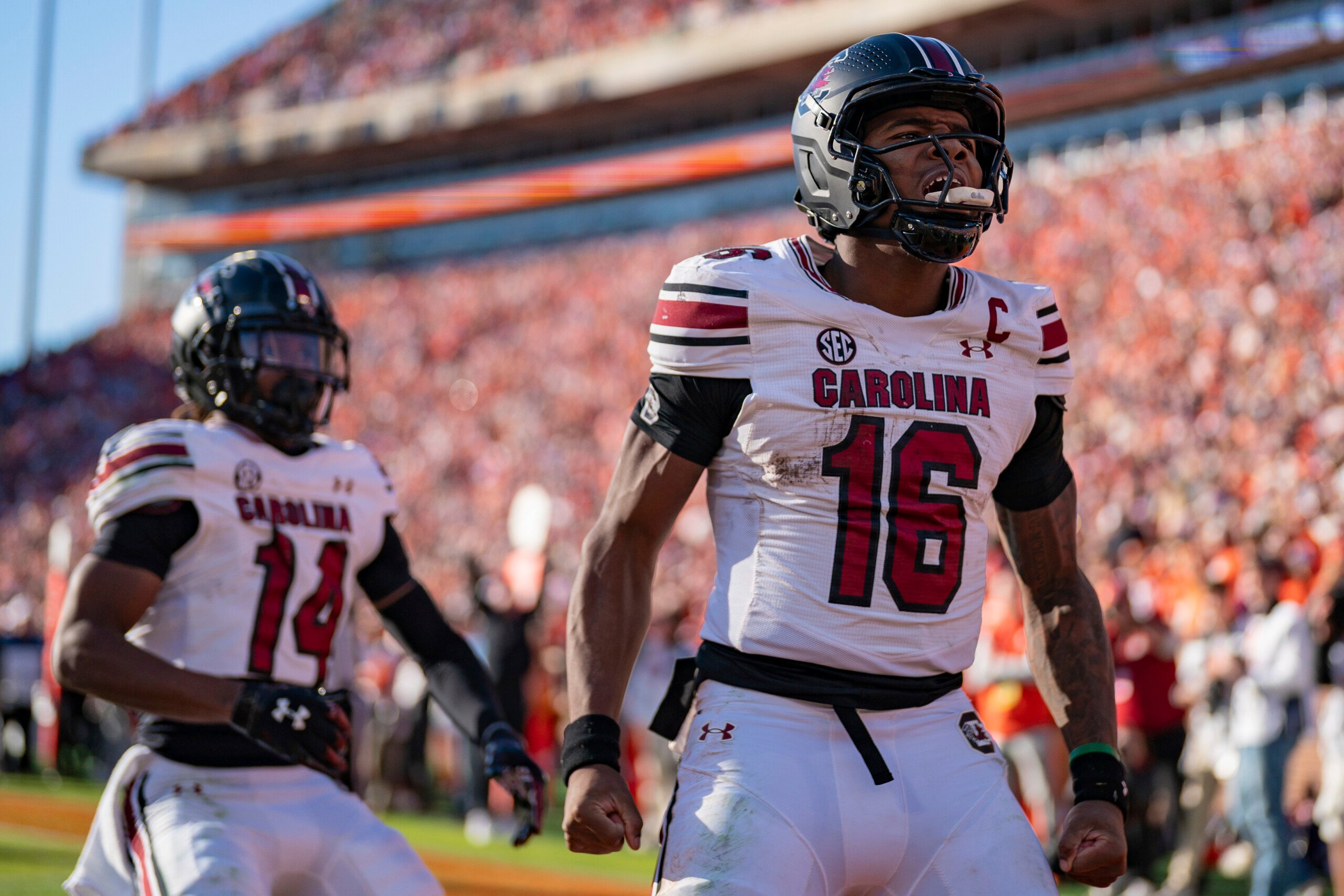

FILE – South Carolina quarterback LaNorris Sellers (16) reacts after scoring a touchdown in the second half of an NCAA college football game against Clemson, Saturday, Nov. 30, 2024, in Clemson, S.C. (AP Photo/Jacob Kupferman, FIle)
(WCIV) — South Carolina’s breakout star quarterback, LaNorris Sellers, couldn’t think of anywhere else to play.
After leading the Gamecocks to a 9-4 (5-3) record in the 2024 season, Sellers, a redshirt sophomore, proved that some things are worth more than money. Sellers’ father, Norris, told The Athletic’s Bruce Feldman that his son was offered a two-year, $8 million NIL offer from another school, which he declined.
“He was offered all kinds of crazy numbers,” Norris said. “I told him he could say, I’m gonna stay or I’m gonna go. By my two cents: It was to get into college on a scholarship, play ball, get our degree and go on about our business. This NIL deal came later. We didn’t come here to make money. We came here to get our education, play ball, and with schools calling, we’re not gonna jump ship because they’re offering more than what we’re getting. If it ain’t broke, don’t fix it.”
LaNorris echoed the sentiment, claiming that he wants to build something special in his home state.
“I’ve been playing football all of my life for free,” LaNorris said. “I’ve built relationships here, my family’s here, my brother’s here. There’s no reason for me to go someplace else and start over.”

South Carolina quarterback LaNorris Sellers looks to throw a pass during the first half of the Citrus Bowl NCAA college football game against Illinois, Tuesday, Dec. 31, 2024, in Orlando, Fla. (AP Photo/Phelan M. Ebenhack)
Sellers is just the latest quarterback in the college football ranks to command eye-opening amounts of money.
According to On3’s NIL valuation tracker, Arch Manning commands $6.8 million at the University of Texas. Carson Beck, who earned $4.3 million from the University of Miami, was not far behind.
Sellers has built a cult-like following after his slow start in Columbia.
He threw for 2,534 yards and 18 touchdowns. Sellers also pitched in on the ground, rushing for 674 yards and seven touchdowns.
The defining performance of Sellers’ first year as a starter came in a rivalry game against Clemson, where he ran for 166 yards and two touchdowns in a come-from-behind 17-24 win. He capped off that performance with an impressive 20-yard touchdown run on a third-and-16 play with one minute remaining.
With just one year as a full-time starter under his belt, Sellers is already ranked as a top-five draft pick in 2026, according to ESPN.
But until then, he is comfortable saying that no amount of money can buy him the happiness he felt playing for the Gamecocks.
“He’s made of the right stuff,” Gamecocks Head Coach Shane Beamer said. “He’s got a great family around him. He knows what he means to this state. LaNorris has a chance to leave a legacy here.”
NIL
NIL Struggles Far From Over After NCAA's House Settlement
NIL Struggles Far From Over After NCAA’s House Settlement originally appeared on Athlon Sports. The historic decision to overturn the current NCAA regulations regarding student-athlete compensation in favor of a more profitable era has been made. However, another issue has arisen. Advertisement Advertisement Advertisement Less than a week since the House Settlement was finalized, eight […]
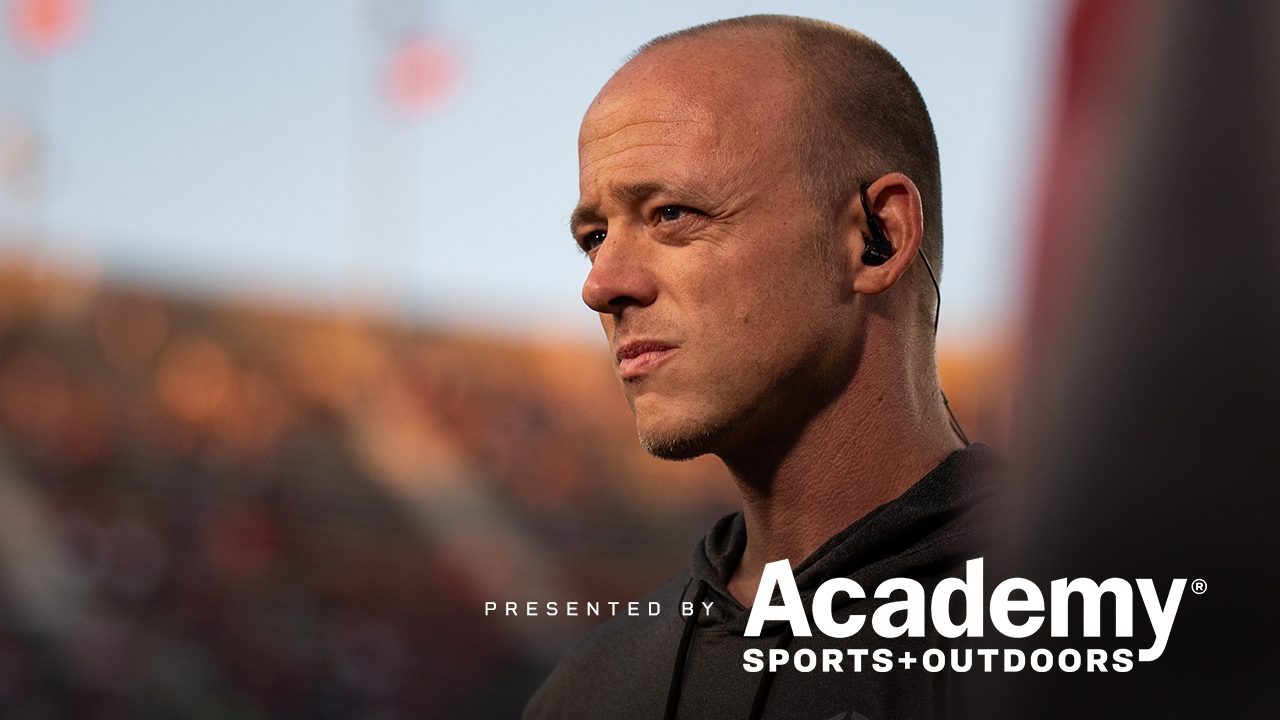
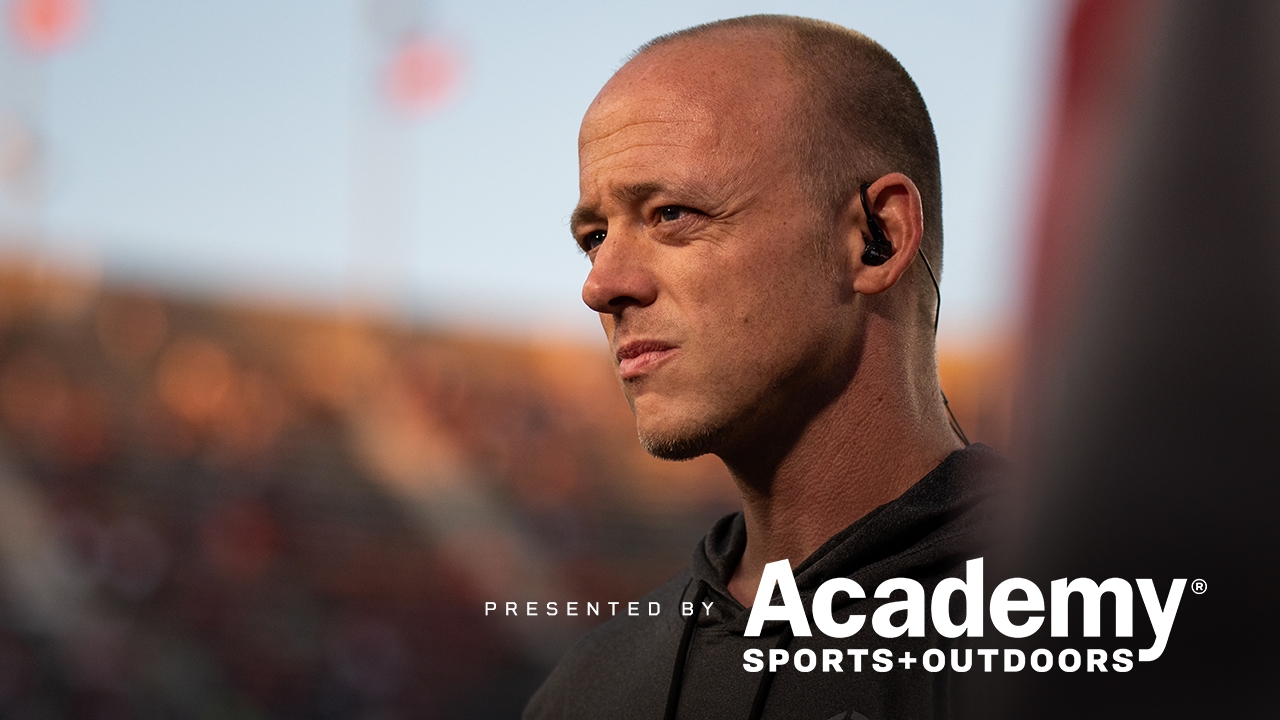

NIL Struggles Far From Over After NCAA’s House Settlement originally appeared on Athlon Sports.
The historic decision to overturn the current NCAA regulations regarding student-athlete compensation in favor of a more profitable era has been made. However, another issue has arisen.
Advertisement
Less than a week since the House Settlement was finalized, eight female athletes from three different schools have filed an appeal to the landmark ruling. They claim that the settlement violates federal anti-discrimination law against female athletes. The appeal addresses concerns about fair compensation for female athletes and asserts that the settlement itself violates Title IX, a federal law that strictly prohibits sex-based discrimination in education.
The eight former student-athletes who initiated this appeal are College of Charleston’s Lexi Drumm, Emma Appleman, Riley Hass, Savannah Baron, Elizabeth Arnold, Emmie Wannemacher, Kacie Breeding from Vanderbilt University, and Kate Johnson from Virginia Tech University. These athletes are proficient in soccer, track and field, and volleyball.
Each of these individuals had previously filed objections to the proposed NCAA settlement, granting them standing to appeal the decision. They, along with their legal representation, contend that former female student-athletes will be receiving an unjust amount of compensation based on the settlement’s terms. Attorney Ashlyn Hare has even asserted that female athletes would be deprived of $1.1 billion.
In response, the plaintiffs in the settlement issued a statement revealing the consequences of this appeal, as well as stating that Judge Wilken (the judge who made the historic decision) has already made the correct decision to deal with the Title IX issue “correctly, quickly, and multiple times”. With this appeal set to play out, former student-athletes may be waiting another few months to possibly more than a year before the first settlement checks begin to arrive, putting a halt to the player back-pay settlement once again.
Advertisement
The settlement has shown that priorities will be given to football and basketball players when it comes to NIL payments, showing that the stars of these sports at the biggest schools will receive a larger chunk of the allotted $20.5 million per year that colleges will be allowed to share with their student-athletes.
Related: Arch Manning adds to NIL portfolio with major deal
It is also rumored that athletes in sports at those same schools that don’t make as much revenue could possibly see their partial scholarships removed or even roster spots cut due to the decision of the settlement as it is now. The appeal is set to challenge these issues as well.
With this appeal filed and the back-pay to former student-athletes temporarily suspended, the decisions made in the future will establish regulations and ensure a fair and equitable future for both male and female student-athletes.
This story was originally reported by Athlon Sports on Jun 17, 2025, where it first appeared.
-

 High School Sports2 weeks ago
High School Sports2 weeks agoParents Speak Out As Trans Pitcher Throws Shutout In MN State Quarterfinals
-

 College Sports3 weeks ago
College Sports3 weeks agoIU basketball recruiting
-

 Health2 weeks ago
Health2 weeks agoOregon track star wages legal battle against trans athlete policy after medal ceremony protest
-

 Professional Sports2 weeks ago
Professional Sports2 weeks ago'I asked Anderson privately'… UFC legend retells secret sparring session between Jon Jones …
-

 Professional Sports2 weeks ago
Professional Sports2 weeks agoUFC 316 star storms out of Media Day when asked about bitter feud with Rampage Jackson
-

 High School Sports3 weeks ago
High School Sports3 weeks agoThe Arizona Daily Star's top high school athletes, coaches and moments of the 2024
-

 Rec Sports2 weeks ago
Rec Sports2 weeks ago2x NBA All-Star Reacts to Viral LeBron James Statement
-
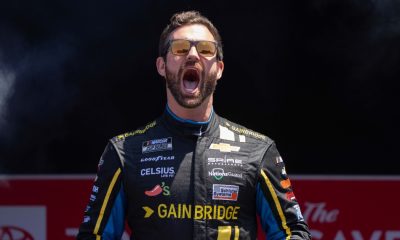
 Motorsports2 weeks ago
Motorsports2 weeks agoCorey LaJoie to make nine NASCAR Truck Series starts with Spire Motorsports
-

 Social Media2 weeks ago
Social Media2 weeks agoControversial Athletics Gender Dispute Goes Viral After Riley Gaines Lashes Over Authorities
-

 NIL2 weeks ago
NIL2 weeks agoPatrick Mahomes in OKC for WCWS, praises NiJaree Canady and Texas Tech

















 #NBAFinals
#NBAFinals













